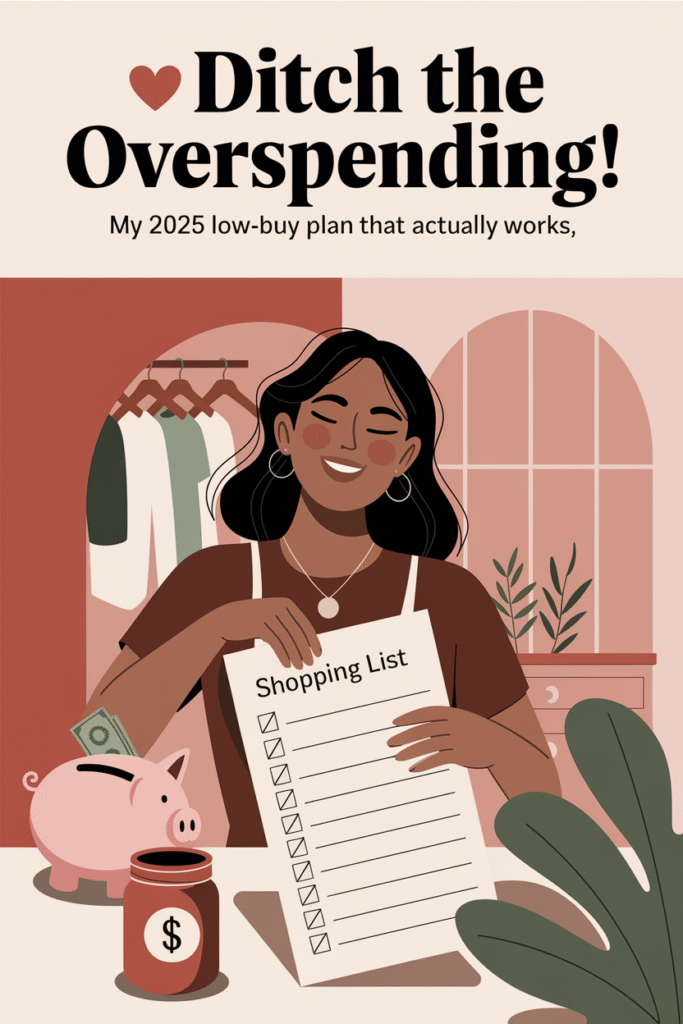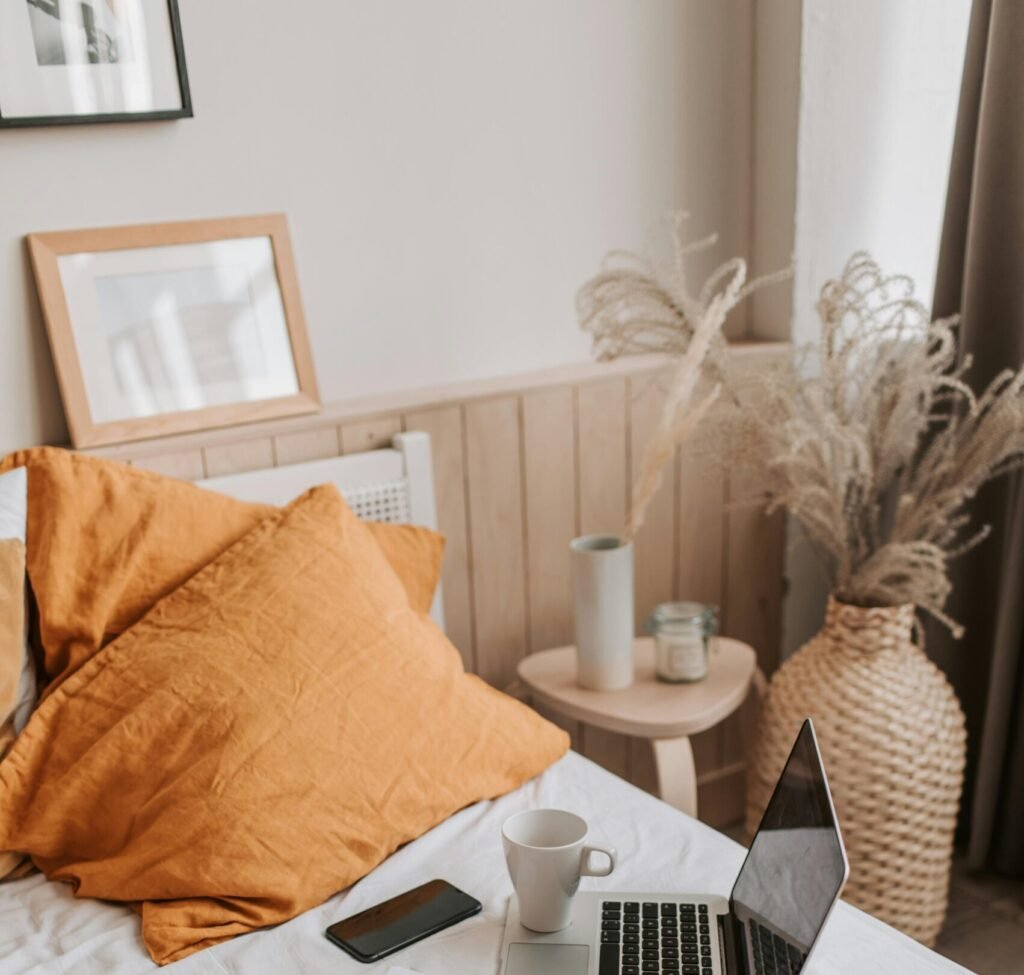Do you ever feel like your spending is out of control? That no matter how much you earn, you never seem to save enough—or worse, you’re constantly surrounded by clutter and regretful purchases? I know for myself, it seems like I have a never ending cycle of packages being delivered to my door.
When I really stop and think about it, do I really need all this stuff? Absolutely not.
You’re not alone. In a world where we’re bombarded by marketing and next-day shipping, it’s easy to fall into the trap of buying more than we need. That’s why a low-buy year is resonating with so many people right now (including myself)—especially as we move more into 2025, a year where more of us are prioritizing financial freedom, sustainability, and intentional living.
Whether you’re trying to cut back, break a shopping habit, or simply want a fresh start, a low-buy year might be the lifestyle reset you’ve been craving.
What Is a Low-Buy Year?
A low-buy year is a self-imposed challenge where you commit to limiting your spending on non-essential items for an extended period—typically a full year. But unlike a “no-buy” challenge, which can feel extreme and rigid, a low-buy year offers you flexibility and personalization. Honestly? If a year sounds too intimidating, start with a week, or a month and work your way up from there. I know the thought of committing to a year sounds like a long time but by breaking it down month by month you can build on your new habits and see how far you can go!
The key difference? A low-buy year focuses on intentionality—not restriction. It’s about being conscious of what you purchase and why, while still allowing for necessary or meaningful expenses.
Why Try a Low-Buy Year in 2025?
Let’s face it—we live in a spending culture. Buy now, pay later. Instant gratification. Algorithm-driven ads that seem to read your mind. I seem to get sucked into the newest zara arrivals (which comes out with new ‘must haves’ every week), or shopping try on reels where influencers show off a seemingly endless wardrobe of ‘must haves’ and trends. It’s so easy these days to get caught up in the spending culture which is getting more and more normalized everyday.
But deep down, many of us are craving something more meaningful than the next Amazon package.
Here’s what a low-buy year can do for you:
1. Put Your Money Where It Matters
Think about how much you could save by skipping weekly impulse buys or trendy wardrobe updates. That money could fund your emergency savings, a dream vacation, or simply reduce financial stress.
2. Break Free From Impulse Habits
We often shop to cope with boredom, stress, or comparison. A low-buy year helps you identify your triggers and replace those spending habits with healthier alternatives.
3. Declutter Your Life
With fewer purchases, your home becomes lighter, calmer, and more aligned with your lifestyle. Less stuff, less stress.
4. Support Sustainable Living
Buying less is one of the simplest ways to reduce your environmental footprint. It’s a quiet rebellion against overproduction, waste, and fast consumerism.
Step-by-Step Guide: How to Plan Your Low-Buy Year
Starting a low-buy year doesn’t require a minimalist wardrobe, zero furniture, or a color-coded spreadsheet. All you need is clarity, honesty, and commitment.
Step 1: Define Your “Why”
Your reason is your anchor. Maybe you’re saving for a home, trying to get out of debt, or just exhausted by how cluttered your life feels. Write down your “why” and revisit it often—it will keep you grounded when temptation strikes.
Step 2: Audit Your Spending
Take a look at your last 3–6 months of bank or credit card statements. Highlight every non-essential expense. Then ask:
- What patterns do I see?
- What purchases do I regret?
- Where can I cut back without feeling deprived?
This audit builds awareness so you can make smarter decisions moving forward. I sat down and created an inventory of clothes (my weak spot) – and took a look at the total amount of new items I had never even worn in my closet. This awareness highlighted how I truly don’t need that next clothing purchase on my wish list.
Step 3: Set Your Rules
This part is personal. Your rules should reflect your lifestyle and priorities. Think about:
- What’s allowed? Essentials like groceries, bills, medicine, and true replacements.
- What’s limited or off-limits? Impulse shopping, unnecessary clothes, décor, fast fashion, tech gadgets, takeout, etc.
What are your exceptions? Pre-planned trips, gift-giving, or something you’ve been saving for intentionally.
Make your rules flexible but firm. You’re setting boundaries, not building a cage.
Step 4: Build New Habits
To break old spending patterns, you need to build new ones:
- Start a 30-day wishlist rule for non-essentials.
- Dive into free hobbies like reading, hiking, or DIY projects.
- Replace mindless scrolling with journaling or creative time.
- Explore what you already own—books, clothes, supplies you forgot about.
You’ll be amazed how fulfilling life can be without the constant buzz of buying.
Step 5: Track and Reflect
Keep a journal, app, or spreadsheet to track:
- Monthly savings
- What you said “no” to
- What tempted you—and how you handled it
- How you’re feeling overall
Reflection makes the journey stick and helps you appreciate the growth along the way.
Avoiding Common Pitfalls
✘ Feeling Deprived
Solution: Focus on what you gain—clarity, space, peace—not just what you’re giving up.
✘ Slip-ups = Failure
Solution: Everyone stumbles. What matters is how you respond. Reflect and recommit.
✘ Comparison Traps
Solution: Your journey is your own. Someone else’s rules or results don’t have to match yours.
Real-Life Low-Buy Inspiration
You’ll also find motivation in online communities like:
- YouTube creators documenting their no-buy/low-buy journeys
- Reddit forums such as r/simpleliving and r/financialindependence
- Instagram accounts focusing on mindful spending and minimalist lifestyles
It’s About Progress, Not Perfection
You don’t need to get everything right from day one. I know I haven’t. A low-buy year is not a punishment—it’s an opportunity. An opportunity to live with more purpose, more peace, and more power over your choices. I’ve started my low but year just by targeting my non essential clothing purchase, one baby step at a time!
Start small. Build your rules. Lean into the process. And remember: the goal isn’t to restrict your life—it’s to reclaim it.
Thinking about trying a low-buy year? Drop your “why” or your first rule in the comments—I’d love to hear how you’re starting your journey!


